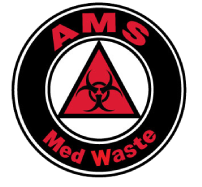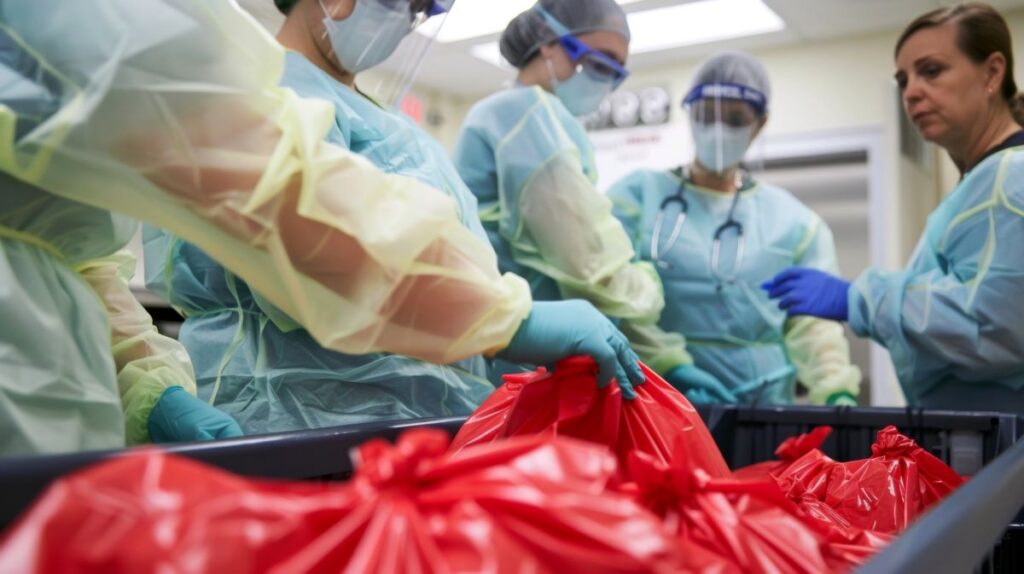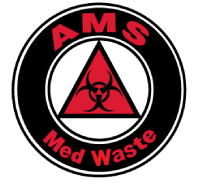According to a March 2019 report titled “Healthcare Waste Management” published by the National Academies Press, healthcare facilities in the United States generate a staggering between 12.6 and 16.1 million tons of medical waste annually. A significant portion of this waste is preventable through simple yet effective practices. Minimizing medical waste isn’t just environmentally friendly; it translates to substantial cost savings for medical facilities.
At AMS MedWaste, a licensed medical waste disposal company with a proven track record and adherence to HIPAA regulations, we’re dedicated to helping healthcare providers implement sustainable and cost-effective medical waste management solutions. This blog post explores key strategies to reduce your facility’s medical waste footprint and improve your bottom line.
Reduce at the Source: Prevention is Key
- The most effective approach to medical waste minimization is preventing its generation in the first place. Here are some key strategies for source reduction aligned with EPA guidelines:
- Standardize procedures: Consistent protocols, established in collaboration with medical professionals, can minimize unnecessary use of medical supplies.
- Invest in reusables: Opt for reusable sharps containers, basins, and other equipment whenever possible, ensuring proper sterilization and disinfection according to CDC guidelines.
- Pre-filled syringes: Pre-filled syringes can significantly reduce medication waste compared to multi-dose vials.
- Medication portion control: Dispense only the amount of medication needed for a specific patient, adhering to best practices for medication handling.
- Unused medication donation: Partner with organizations certified by the National Association of Boards of Pharmacy (NABP) to collect and distribute unused medications responsibly.
Segregate Waste Properly: Safety and Cost Efficiency
Proper segregation of medical waste is essential for safe disposal and cost optimization. Mixing different waste streams can contaminate recyclable or non-hazardous materials, requiring them to be treated as hazardous waste and incurring higher disposal fees. Here’s how to ensure effective segregation:
- Staff training: Implement comprehensive compliance training programs to ensure staff can accurately identify and categorize different types of medical waste according to Joint Commission standards.
- Clearly labeled containers: Use color-coded or labeled containers for various waste streams (e.g., red bags for infectious waste, sharps containers, etc.) following OSHA guidelines.
- Regular audits: Conduct periodic audits to monitor waste segregation practices and address any inconsistencies.
Embrace Sustainable Disposal Options: Responsibility for Our Planet
Many medical waste disposal options are now available that are both environmentally friendly and cost-effective:
Waste-to-Energy (WtE): This technology converts medical waste into a usable fuel source, reducing reliance on landfills and incineration. AMS MedWaste prioritizes WtE facilities that meet the EPA’s stringent emissions standards.
Autoclaving: This steam sterilization process can render certain types of medical waste non-infectious, allowing for safe disposal as regular waste in compliance with local regulations.
Microwaving: Similar to autoclaving, microwave technology can be used for specific types of medical waste for safe decontamination, following manufacturer’s instructions and regulatory guidelines.
Partner with a Reputable Medical Waste Disposal Company
Choosing the right medical waste disposal company can significantly impact your waste reduction efforts. Look for a company that offers:
- Comprehensive guidance: Your disposal partner should provide expert advice on developing and implementing a customized waste segregation program aligned with best practices.
- Variety of compliant medical waste containers: The company should offer a range of container sizes and types to meet your specific needs and ensure regulatory compliance.
- Sustainable disposal practices: Partner with a company that prioritizes WtE and other environmentally responsible disposal methods.
- Regular waste audits: A reputable disposal partner will conduct regular waste audits to identify areas for further reduction and cost savings.
The Bottom Line: Reduced Waste, Increased Savings, and a Greener Future
By implementing these strategies, medical facilities can significantly reduce their medical waste footprint, saving money and protecting the environment. Ready to take control of your medical waste disposal and achieve your sustainability goals?
Contact AMS MedWaste today for a free consultation! Our experienced team will help you develop a customized waste management plan that minimizes waste and maximizes your cost savings. We offer a comprehensive suite of services, including:
- Waste segregation guidance from certified professionals
- Wide variety of compliant containers to meet your specific needs
- Sustainable disposal options like WtE that prioritize environmental responsibility
- Regular waste audits to identify further reduction opportunities
- Transparent and competitive pricing structure






